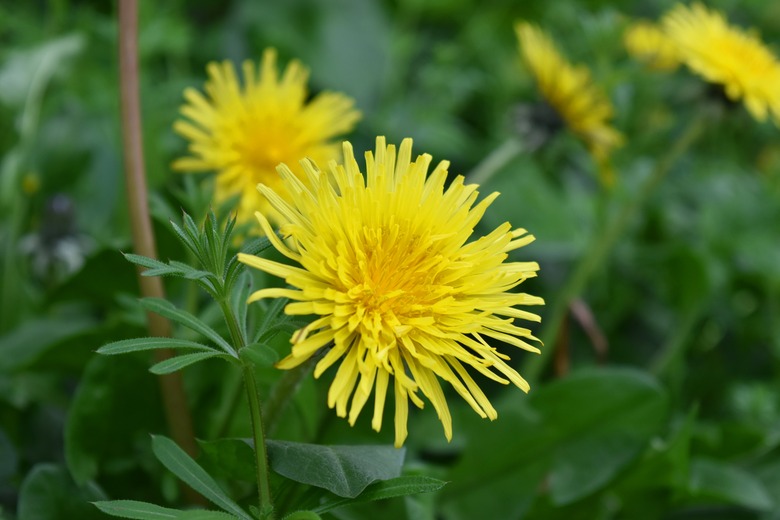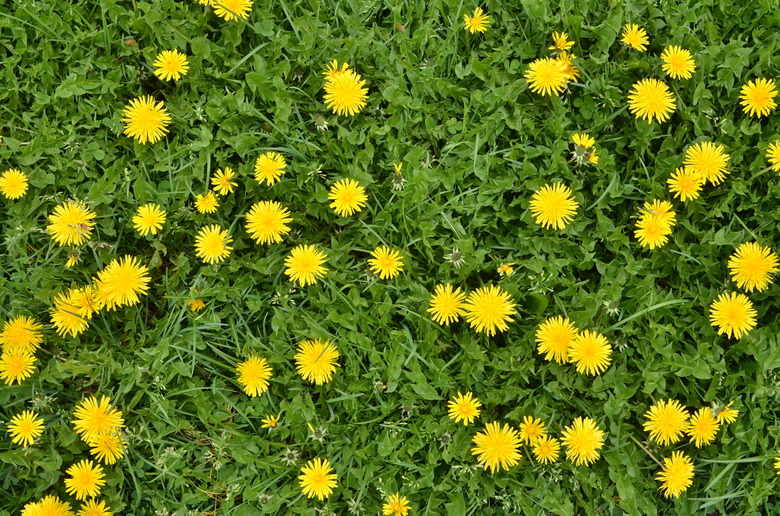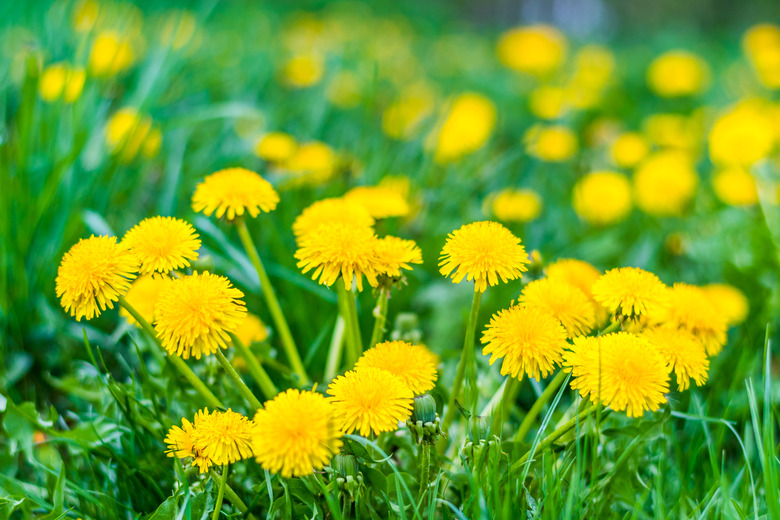How To Grow Dandelions
We may receive a commission on purchases made from links.
Is the dandelion (Taraxacum officinale) a weed? While many gardeners view the dandelion in this light, this hardy and resilient plant is carving out a new role for itself in the garden as a fast-growing, low-maintenance crop plant that also offers an early source of pollen for pollinators and forage for livestock — and don't forget the chipper yellow flowers, beloved by children everywhere. Dandelions are perennials in U.S. Department of Agriculture plant hardiness zones 3 through 9 but are also found in the wild through zone 10.
Best Uses for Dandelions
Best Uses for Dandelions
Dandelions are perennial plants in the sunflower family (Asteraceae) but are considered weeds by many homeowners. As tough survivor plants, dandelions can be seen in almost any area with soil, and they even spring up beside the freeway and between cracks in the sidewalk. Gardeners either love or hate dandelions. Some are charmed by their bright-yellow flowers that turn to puff balls of seeds, while others dread their regular appearance on the lawn, where they are extremely difficult to eradicate. Anyone planting dandelions can grow them in a sunny location in the vegetable garden, where they are more likely to develop large, luscious leaves.
Dandelions also have practical purposes in the garden.
- Every part of the dandelion plant is edible. The young leaves gathered in spring can be added to salads, added to soups or stir-fried and eaten as dandelion greens. The yellow flowers are also edible and quite mild. The individual petals can be pulled out and sprinkled on top of a salad or soup. The flowers can be fried or used to make jam. They can also be used to make dandelion wine, and the deep taproot is roasted and eaten like any root vegetable or used to make tea.
- Dandelions can be used as medicinal plants. The leaves are slightly bitter and are believed to improve digestion. They also are eaten for their nutritional value and are said to be
high in calcium, phosphorous, carotenes, and potassium. Leaves also have diuretic properties and are used to treat high blood pressure and edema among other issues. Sap from the dandelion stem is used as a treatment for warts. The roots are used in treatments for liver issues.
How to Grow Dandelions
How to Grow Dandelions
|
Common Name |
Dandelion |
|
Botanical Name |
Taraxacum officinale |
|
When to Plant |
Optimal spring planting when soil temperatures are above 50 degrees Fahrenheit |
|
USDA Zones |
3-9 |
|
Sun Exposure |
Full sun, partial sun or light shade depending on how hot the summer temperatures get |
|
Soil Type |
Moist, well-draining loam |
|
When it's in Trouble |
Dandelions that get cut down regularly on the lawn get tough with small, bitter leaves |
|
When it's Thriving |
Produces lush green leaves that are delicious with a slightly bitter edge |
When people say that dandelions are the ultimate survivor plants, they aren't kidding. Despite being mowed down and hit with herbicides in lawns, the dandelion continues to grow, breaking though concrete cracks, turning entire fields bright yellow and spreading billions and billions of seeds on the breeze every year. These bright-yellow flowers are seen around the globe almost always spreading naturally by seed. Each dandelion flower only lives for a single day before beginning the transformation into the puffy seed ball that kids of all ages like to blow.
Sowing dandelion seeds doesn't require a very green thumb. It's easy enough to gather dandelion seeds from plants in your area:
- Gather the seeds. Just cut off the ripe seed heads before the wind blows them away, that is, about the same time you would ordinarily think of puffing on them and making a wish.
- Store the seeds. Put them in a paper bag and leave them in the refrigerator for two weeks to increase germination rates.
- Prepare the garden bed. Do the preparations for dandelions just like for any crop, turning or tilling it down at least 10 inches.
- Mix in composted manure or general garden fertilizer. For the best-tasting leaves and roots, use soft, loamy soil that is slightly alkaline and pick a site that gets morning sun but afternoon shade. If that's not possible, think bright shade.
- Spread the seeds. Spreading the seeds evenly over the garden bed is a challenge because they are so tiny. You can mix the seeds thoroughly with fine potting soil or even sand before sowing. Spread the mixture evenly over the planting site, tamping them down with your hands. Then, sprinkle soil on top (just a little) between 1/8 and 1/4 inch. Top this with a thin layer of light mulch to hold in moisture.
- Keep the soil moist until seedlings appear.
- Deadhead the plants. To give your plants the strongest roots possible, some recommend deadheading all plants the first season. That lets the dandelions invest 100 percent of their energy into producing roots and leaves.
Tip
You can also buy dandelion seeds in commerce. The main advantage is that you can pick a type of dandelion. If you want to eat the nutritious leaves but don't like that bitter edge, pick a variety that is less bitter.
In What Zone Do Dandelions Grow Best?
In What Zone Do Dandelions Grow Best?
Dandelions grow best in U.S. Department of Agriculture plant hardiness zones 3 through 9. If you live in zone 10 or 11 and want to grow dandelions in your garden, put them in a site that gets shade all afternoon.
When Should You Plant Dandelions?
When Should You Plant Dandelions?
Dandelions can be planted in spring in all regions, and this is the best time to plant them. They can develop the deep taproots that make them resilient after a summer of strong growth. As many homeowners with lawns have come to understand, dandelion roots are almost indestructible. Even if a large section of root is removed, the plant will regenerate and thrive.
In temperate climates, dandelions can also be planted in autumn or even in winter. Dandelions blossom virtually all year long in mild climates, and seeds can also germinate all year long.
Soil, Sunlight and Water Recommendations for Dandelions
Soil, Sunlight and Water Recommendations for Dandelions
It's hard to think of dandelions as picky about soil when you see them sprouting happily from a crack in the sidewalk. The truth is that dandelions will grow on almost any type of soil. However, the type of soil on which they grow does impact taste. Anyone growing dandelions who intends to eat the leaves will want to prepare the soil well for these perennials.
Soil for Dandelions
To get the best-tasting dandelions, sow your seeds in well-draining loam that has been enriched with composted manure or organic compost. Alkaline soil is preferable. The soil should be broken up and tilled to at least 10 inches.
Light Conditions for Dandelions
Yes, dandelions grow in any exposure, from bright, direct sun to deep shade, but again, the taste of the plant is different in different growing conditions. Ideally, dandelions will grow with some sun and some shade. In cooler areas, full-sun areas may do nicely. The hotter the summer in a region, the more afternoon shade the dandelions will require.
Watering Dandelions
Water is particularly important to dandelions when they are germinating or are young seedlings. During these periods, you'll want to keep the soil moist. After the plants have established, a once-a-week irrigation plan should be fine.
How to Harvest Dandelions
How to Harvest Dandelions
Since all parts of the dandelion plant are edible, harvest can look different depending on what you want to eat. Most people eat dandelion "greens," which means the plant's leaves. There is no single point of harvest for these. Leaves are most tender just after they appear in spring, but you can use your garden scissors to snip off a few at a time during the entire growing season. If you harvest leaves throughout the season, you may find them increasingly bitter. To prevent this, blanch the leaves by covering the plants from sunlight for two weeks before harvest.
The dandelion roots are best harvested after the plants are two years old. Dig them up in the fall after the first frost since they are highest in inulin at that time, resulting in a sweeter taste and more nutrients. Alternatively, harvest them in late spring before they flower.
Obviously, once you harvest the roots of a dandelion plant, it will not grow back the following year unless you replant. If you are growing dandelions for both the roots and leaves, you might divide your site into four sections, taking the roots from one section in fall and sowing seeds in that section the following spring. The following fall, take the roots from another section.
Common Pests and Other Problems for Dandelions
Common Pests and Other Problems for Dandelions
Homeowners armed with toxic chemicals and weed removers have not been able to conquer dandelions in lawns. That means it is no surprise that dandelions have very few garden pests that threaten their health or existence. With or without water, sun, shade or cultivated soil, dandelions keep popping out of the ground. However, there are a few problems for which to look out:
- Excess sun: Too much sun won't kill a dandelion, but it will make the leaves tough and bitter. Protect your plants by siting them where they get shade from the afternoon sun.
- Horses, cows, goats and sheep: Dandelions growing in fields provide supplemental forage for livestock. Your best defense against these herbivores is to keep them out of your garden area since they are likely to enjoy almost any crop you have growing there in addition to the dandelions.
- Common cockchafer: This insect pest spends the early part of its life cycle — the first three years — as a grub. During this stage, it lives underground and eats the roots of different plants. This voracious pest's favorite meal is dandelion roots. However, you don't have to worry about the cockchafer since the dandelion once again shows what resiliency means.
Dandelion roots produce a bitter substance called latex that fends off the pests. The latex contains one substance that inhibits the growth of the cockchafer grub. - Ruby tiger moth larvae: These caterpillars love to feed on dandelion leaves. They are large enough that you'll be able to spot them and pick them off your plants by hand.
Common Diseases for Dandelions
Common Diseases for Dandelions
Powdery mildew is a fungal disease that attacks dandelions just like other garden plants. It shows up as a white powder on the foliage. Deal with this problem by spraying the plants with neem oil. Better yet, eliminate the problem by not getting irrigation water on the dandelion leaves.


